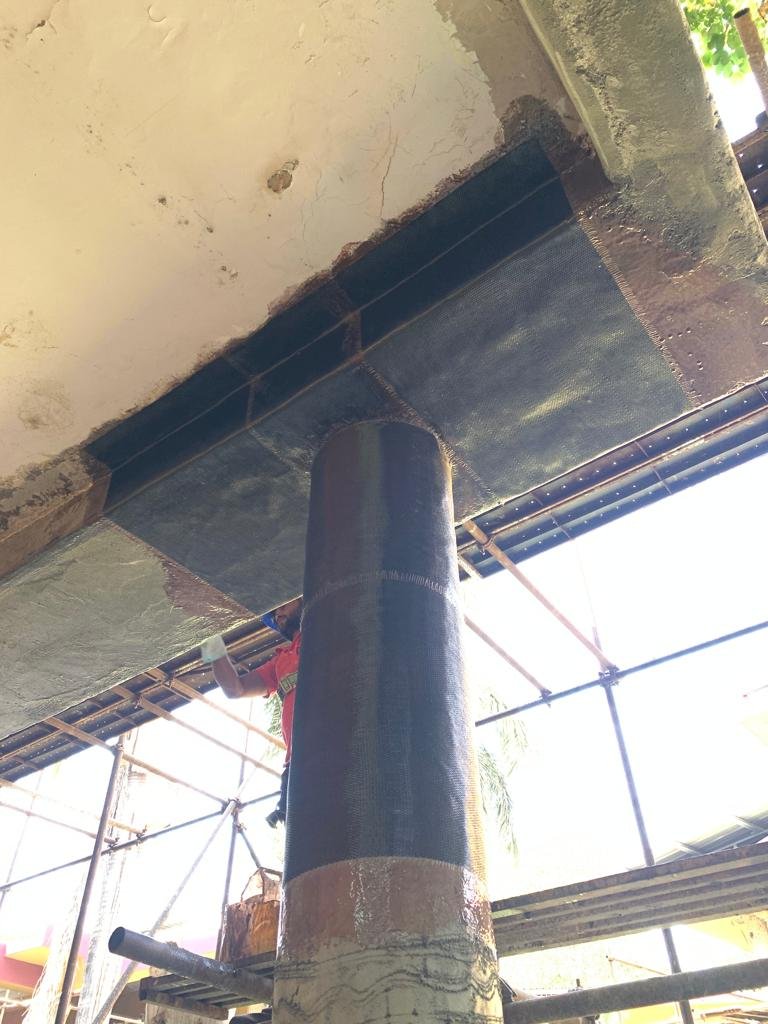Concrete structures are often subjected to bending stresses that can cause cracks, deformation, or even failure over time. Flexural strengthening has become one of the most effective solutions for improving the load-carrying capacity and lifespan of beams, slabs, and other reinforced concrete elements. It ensures that structures remain safe, durable, and capable of handling increased service loads without major reconstruction.
Understanding the Concept of Flexural Strengthening
Flexural strengthening refers to the process of improving a structural member’s resistance to bending forces. It is commonly applied to reinforced concrete beams, slabs, and girders that experience excessive deflection or cracking. By increasing the member’s flexural capacity, engineers can restore or even enhance the performance of aging structures. This method helps in extending the service life of critical infrastructure such as bridges, industrial buildings, and residential complexes.
When Is Flexural Strengthening Required?
Flexural strengthening is usually required when the structural load demand increases beyond the original design capacity. This can happen due to change in usage, structural deterioration, or construction errors. In many cases, structures exposed to environmental conditions like corrosion or weathering show signs of weakness. Instead of rebuilding, engineers prefer strengthening techniques that restore capacity quickly and cost-effectively while minimizing downtime.
Common Methods Used for Flexural Strengthening
There are several practical methods used to achieve flexural capacity improvement. Traditional approaches involve steel plate bonding or concrete jacketing, while modern techniques use Fiber Reinforced Polymer (FRP) systems. Among these, carbon fiber wrapping has gained popularity due to its high strength-to-weight ratio, corrosion resistance, and ease of installation. Other options include external prestressing, section enlargement, and bonded reinforcement systems, depending on structural needs.
Advantages of Using Carbon Fiber Wrapping for Strengthening
Carbon fiber wrapping is one of the most efficient and durable solutions for flexural strengthening of beams and slabs. It offers several advantages such as lightweight handling, quick application, and minimal structural disturbance. Unlike steel plates, carbon fiber sheets do not corrode, which makes them suitable for harsh environments. Additionally, they provide excellent tensile strength, enhancing both the flexural and shear capacity of reinforced concrete elements.
Steps Involved in the Flexural Strengthening Process
The flexural strengthening process begins with a detailed assessment of the structure to identify the extent of damage or load deficiency. Once the evaluation is complete, engineers clean the surface and apply bonding materials like epoxy resin. Carbon fiber sheets or steel plates are then fixed to the tension side of the structural member. After curing, the strengthened member gains improved load resistance, stiffness, and deflection control.
Flexural Strengthening of Reinforced Concrete Beams
RCC beam strengthening is one of the most common applications of this technique. When beams show cracks due to bending, strengthening restores their capacity without altering the overall design. Engineers often use carbon fiber wraps or steel plates bonded to the beam’s soffit. This increases the moment capacity, reduces deflection, and enhances the safety margin. The process is efficient for both old structures and newly constructed beams with design flaws.
Role of Structural Retrofitting in Flexural Strengthening
Structural retrofitting complements flexural strengthening by addressing other issues such as shear failure or torsional distress. Together, they help in achieving a balanced load transfer mechanism. Retrofitting is particularly useful in seismic zones where structures are subjected to cyclic bending stresses. By integrating flexural strengthening with retrofitting techniques, engineers ensure that the entire framework remains safe during both static and dynamic loading conditions.
Flexural Strengthening for Slabs and Bridge Decks
Bridges and slab systems often suffer from increased traffic loads or deterioration due to environmental exposure. In such cases, flexural strengthening for bridge decks or slabs is crucial. Techniques like FRP wrapping and steel plate bonding improve flexural capacity without adding much weight. This approach not only restores structural integrity but also prolongs the lifespan of infrastructure assets, minimizing maintenance costs and operational interruptions.
Material Selection for Effective Flexural Strengthening
The success of any flexural strengthening project largely depends on choosing the right materials. High-performance epoxies, corrosion-resistant carbon fiber fabrics, and compatible adhesives are essential for durability. Engineers also consider factors such as design load, environmental exposure, and service life expectations before finalizing materials. Proper selection ensures a reliable bond, long-term performance, and resistance against chemical or thermal degradation.
Benefits of Flexural Strengthening in Concrete Structures
The benefits of flexural strengthening go beyond increased load capacity. It helps improve the structural performance, minimizes crack formation, and enhances durability. For existing structures, strengthening reduces the need for demolition or complete reconstruction, saving both cost and time. Additionally, techniques like carbon fiber wrapping improve aesthetics, since they require minimal surface alteration and can be applied discreetly to various structural elements.
Flexural Strengthening vs Shear Strengthening
While flexural strengthening focuses on enhancing a member’s bending capacity, shear strengthening aims to improve its resistance against diagonal cracking or web failure. Both techniques are often used together for RCC strengthening projects. For instance, carbon fiber sheets applied in different orientations can simultaneously improve flexural and shear strength. A combined approach ensures balanced performance and helps structures withstand complex loading conditions effectively.
Applications of Flexural Strengthening in the Construction Industry
The use of flexural strengthening has become increasingly common in residential, commercial, and industrial projects. It is widely used in bridge rehabilitation, building restoration, parking structures, and industrial facilities. The method’s versatility and minimal downtime make it ideal for structures that need quick load capacity enhancement. Moreover, with advancements in FRP technology, engineers now have more durable and cost-effective solutions for structural strengthening.
Importance of Professional Assessment and Design
Before implementing flexural strengthening, a professional structural assessment is essential. Engineers analyze load patterns, reinforcement detailing, and stress distribution. Based on the findings, they design a custom strengthening plan that ensures compatibility with existing elements. Professional guidance guarantees that the new system performs effectively under both service and ultimate loads, ensuring safety, efficiency, and compliance with engineering codes.
Future of Flexural Strengthening in Modern Infrastructure
As urban infrastructure ages, the demand for flexural strengthening solutions continues to grow. With advancements in composite materials, digital design tools, and non-destructive testing methods, the process is becoming more precise and sustainable. Future trends point toward smart monitoring systems and eco-friendly strengthening materials that will further enhance the resilience of concrete structures against evolving structural and environmental challenges.
Flexural strengthening plays a vital role in ensuring the long-term performance and safety of reinforced concrete structures. By using advanced materials like carbon fiber wraps and following systematic design and application methods, engineers can effectively restore and improve flexural capacity. As infrastructure continues to age and load demands increase, adopting modern structural strengthening techniques is the key to building sustainable, durable, and resilient structures for the future.


